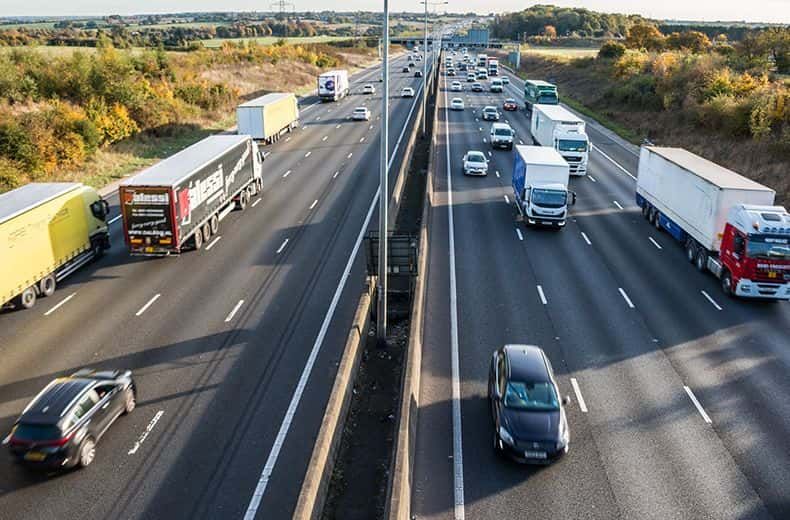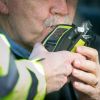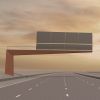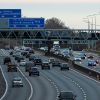Only a fifth (22%) of the 1,900 drivers surveyed would do the right thing after breaking down on one of the UK’s fastest roads on a cold and wet winter’s night by standing to the rear of their vehicle and as far as possible from traffic, ideally behind a barrier if there was one. Frighteningly, one-in-10 (11%) said they would stay in their vehicle, leaving them at great risk of being seriously injured or killed if another vehicle were to hit them.
Two-thirds (65%) would also unwittingly put themselves at risk by standing either in front of or next to their car, where they could be hit in the event of another driver colliding with their broken-down vehicle.
Shockingly, the analysis corresponds with reports from nearly 200 RAC patrols, who found 78% of drivers they have attended who had broken down on motorways were still in their vehicles when they arrived.
In an effort to keep RAC members and all drivers safe after breaking down on a motorway, RAC patrols Glen Johnson and James Pallister came up with the idea of making a video highlighting exactly how people should get out of their vehicles and where they should stand. The film is shared with all RAC members who are unfortunate enough to break down on a motorway and is also available for everyone to benefit from on YouTube.
RAC on motorway breakdowns
Glen Johnson, who has been an RAC patrol since 2018 and works around the North West of England, said: “Standing in the wrong place in the event of a breakdown on a high-speed road can be the difference between staying safe and being seriously injured, or worse.
“Our number-one priority is ensuring our members stay safe on the roads, so we’re always looking for new ways to communicate the right thing to do after breaking down. That’s why we thought a video would be the best way to show drivers what to do while they wait for help if they’re unlucky enough to break down on one of our fastest roads.
James Pallister, who has been an RAC patrol since 2015 and works around the North East of England, said: “Increasingly, when we arrive at the scene of a motorway breakdown we find members still inside their vehicles, or stood next to or in front of them – two of the most dangerous places to be with vehicles approaching at fast speeds.
“Instead, our advice to drivers and their passengers is to use the doors furthest from the traffic to leave their vehicle, stand to the rear of their vehicle, facing and as far away from oncoming traffic as possible, behind a barrier if there is one. The only exception to this is if someone has mobility difficulties and can’t easily leave the vehicle – in which case they should keep their seatbelt on and call 999.”
RAC Breakdown spokesperson Alice Simpson said: “In cold wet weather, it’s very tempting for anyone who breaks down on a motorway to stay in their cars. Sadly, we know from experience this is absolutely the wrong thing to do unless for some reason you aren’t able to get out of the vehicle. This is why we are always reminding people to pack plenty of layers, good waterproof clothing and sturdy footwear so they can keep warm while they wait for help.
“The more understanding everyone has of what to do should they break down on a high-speed road, the better. We hope the safety advice video that our patrols James and Glen have made will keep more drivers safe in the event of a motorway breakdown.
“While it’s important those breaking down take the right steps to keep safe, it is also vital that breakdown and recovery operators are protected from potential collisions from passing traffic. For this reason, we are pleased the Government is finally going to allow the industry to use red flashing lights, in addition to the customary amber ones, after years of campaigning from the RAC and others.
“We believe this will save the lives of both breakdown workers and their customers, so we are now very keen for the Government to confirm when these powers will be formally granted.”
What to do if you break down on a motorway
- Pull over on the hard shoulder if there is one
- Turn on your hazard lights and sidelights
- Turn on rear fog lights too if the visibility is poor and you can’t see over 100 metres
- Get out of your vehicle if it’s safe using the doors furthest from traffic. Wear bright or high vis clothes if you have any
- If there’s a safety barrier, wait behind it to the rear of your vehicle. Watch out for potholes and steep drops
- If there’s no safety barrier, stand to the rear of your vehicle far away from traffic
- Keep your eyes on the traffic at all times
- Keep calm and stay where you are until the patrol arrives
If the driver or passengers have a disability
- Stay inside the vehicle with your seatbelt on
- If possible, move everybody to the passenger side of the vehicle
- Call 999 to make them aware
- Keep calm and stay where you are until the patrol arrives
RAC motorway fault data highlighted flat tyres, punctures and engine issues as the main cause of breakdowns in 2023.2
Members and non-members can call the RAC on 0333 2000 999 or use the free myRAC app to get instant breakdown support. By reporting a breakdown via the app, drivers will receive a confirmation text and regular updates on their patrol’s arrival time.

RAC sale – up to 33% off*
• Roadside cover from £5.29 a month†
• We get to most breakdowns in 60 mins or less
• Our patrols fix 4/5 breakdowns on the spot

1 Survey completed on RAC's behalf by Online95. 1,900 UK drivers surveyed. Research conducted between 18 – 29 October 2023
2 Poll of 189 RAC patrols between 11 – 31 October 2023










